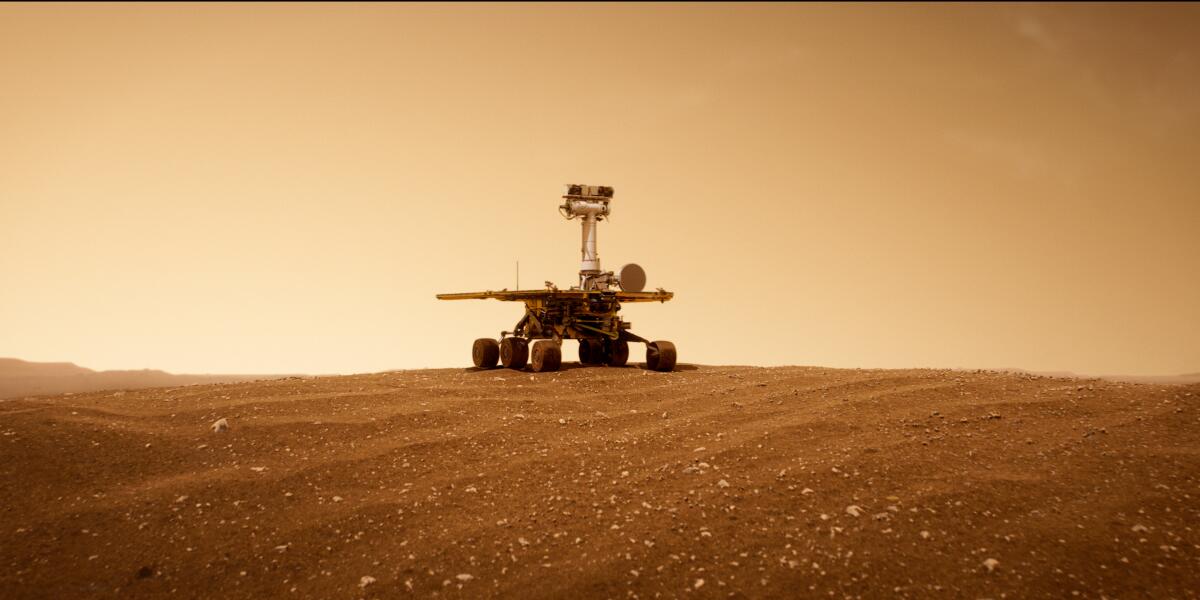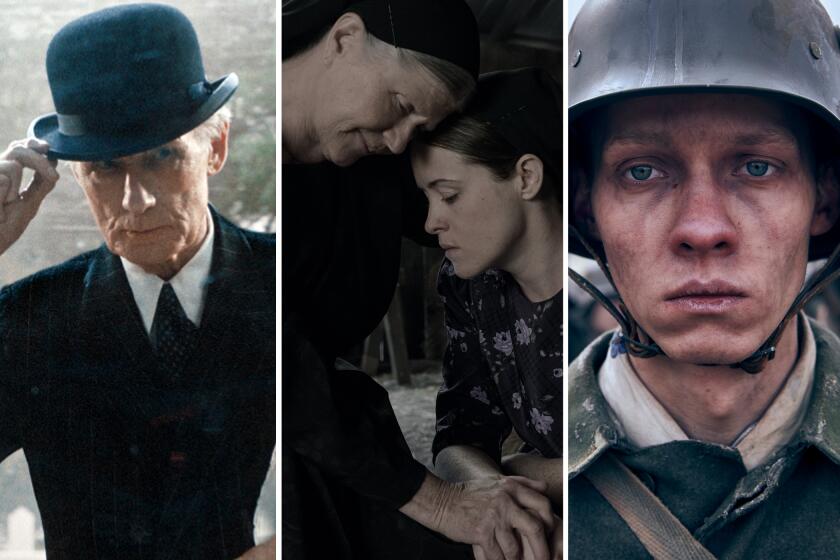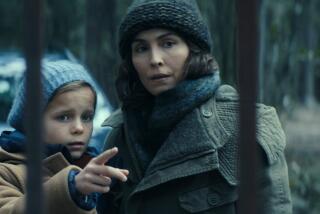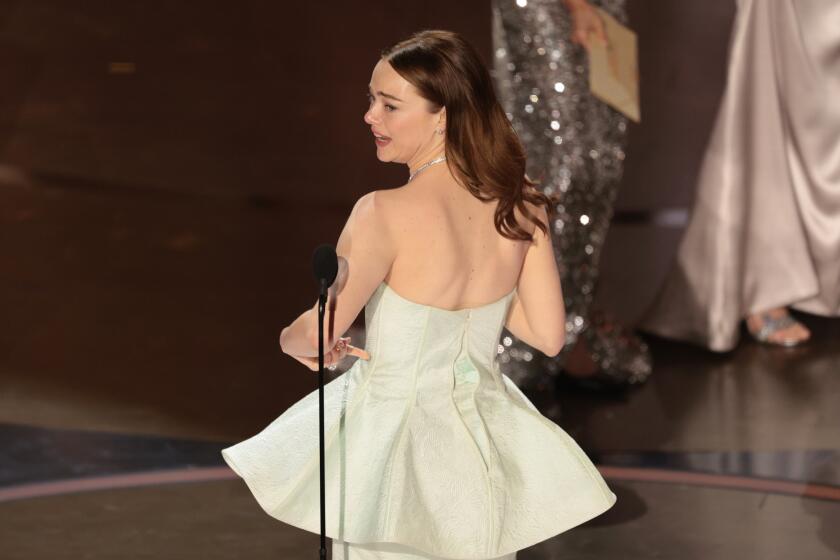‘Good Night Oppy’s’ mission to Mars demands ultra-realism for its look to be unique

As a documentary filmmaker, Ryan White has tackled subjects as varied as the fight for gay marriage in the Supreme Court, the life of Dr. Ruth Westheimer, the impact of tennis legend Serena Williams and the trial of two women convicted of assassinating the half-brother of North Korean dictator Kim Jong-un. What he’s always wanted to do, however, was make a film about space, a subject he’s been fascinated with since his childhood as a “space geek.” That chance finally came his way when Steven Spielberg’s Amblin Entertainment and Peter Berg’s Film 45 pitched him an idea: What about a movie that chronicled the incredible journey of the Spirit and Opportunity rovers on Mars?
White recalls, “My response right away was, ‘If we’re going to do this, can we do it in a way where we take the audience to Mars in a way that’s never happened before?’ Amblin said, ‘Well, we don’t know, but our best friends at Industrial Light & Magic [might]. Why don’t you talk with them about it?’”
The result is “Good Night Oppy,” a documentary that tells the story of Spirit’s six-year trek and the incredible 15-year odyssey for Opportunity, which was designed to last only 90 days. But the film tells another story too as it chronicles the ups and downs of the real-life people who kept the missions going at the Jet Propulsion Laboratory in La Cañada Flintridge. The film wouldn’t work, however, without the CG animation that gives a real-world perspective to the NASA-built landers. The space agency had hundreds of thousands of photographs from Mars for ILM to reference and White wanted to make sure the result was something that looked photo real and not akin to an animated film such as “WALL-E.”

“They said, ‘We’ve never done that before. We’ve created Mars before. But it’s been based on an actor or on a desert in Utah. We’ve never created it from scratch but show us the photography and the telemetry,’” White says. “That was the beginning of the process. Of course, it takes forever. So, it wasn’t a year until, over a year until I saw any finished Mars shots. But they’re the best in the business at that stuff.”
It was also incredibly important to White that the scientists and engineers at NASA felt that Mars not only looked real but better than anything they had seen before. Nailing the different shades of the red planet’s landscape? Not a problem. Matching the detail of Mars’ geological environment? That was tougher.
“I know we drove ILM insane at times asking for the utmost accuracy,” White says. “We would constantly be going to them because it’s really hard to change shots, especially when you’re in the later stages. But saying, ‘The grade of this crater is too steep and we can’t do that because it would be exaggerating,’ and they would have to regrade it. Or it would be about the texture of the rocks in a crater as it goes down, ‘The texture of these stripes of the rocks is wrong.’ They would go back and redo it.”
Chronicling Spirit and Opportunity’s adventures also meant creating an ambient environment. While not hospitable to humans, there is an atmosphere on Mars and that means there is sound. White had the talents of legendary sound editor Mark Mangini, who won his second Oscar — for “Dune” — during the production of “Oppy,” to bring that aspect of the film to life. A new generation of rovers conveniently assisted in that regard.
“We were very lucky that while we were making the film, Perseverance, the current rover that’s on Mars, was the first rover that had audio microphones on her,” White says. “She was recording sound and sending it back to Earth, which are the first recordings from Mars. Mark was able to use all of her recordings from Mars to layer together a real atmosphere instead of having to create it himself from nothing.”
Despite that technical wonder, it was the stories of those real-life people on the ground at JPL that became the heart of the movie. It was a bit unexpected for White and his longtime producing partner, Jessica Hargrave.
“I think we both assumed that the scientists and engineers would be the least interesting part of the film,” White says. “That it was going to be that we loved the idea of this robot that exponentially outlasted the odds. We don’t usually make talking head films. Are [the NASA folks] going to be that interesting? I would say that was the best surprise of making the film and, in the end, the foundation of the film is the emotion that these people experienced.”
Our BuzzMeter film experts predict the Oscar winners in 10 categories. Check out the consensus picks, close races and interesting narratives - and vote in the polls for every category.
White recalls that when Hargrave and senior associate producer Grace Oathout started pre-interviews and research for the project, they discovered an “embarrassment of riches of human beings” to help tell the rovers’ remarkable story.
“I think one of the hardest parts of making the film was how do you choose? We have 11 people in the film in the end, how do you choose 11 people out of thousands of people worldwide?” White says. “Oppy had just passed away when we began the film, and they move on very fast to the next mission. I think they were thrilled to get to be able to, even before we had cameras there, just on a Zoom, to be able to talk about something that was so special to them.”
More to Read
From the Oscars to the Emmys.
Get the Envelope newsletter for exclusive awards season coverage, behind-the-scenes stories from the Envelope podcast and columnist Glenn Whipp’s must-read analysis.
You may occasionally receive promotional content from the Los Angeles Times.







